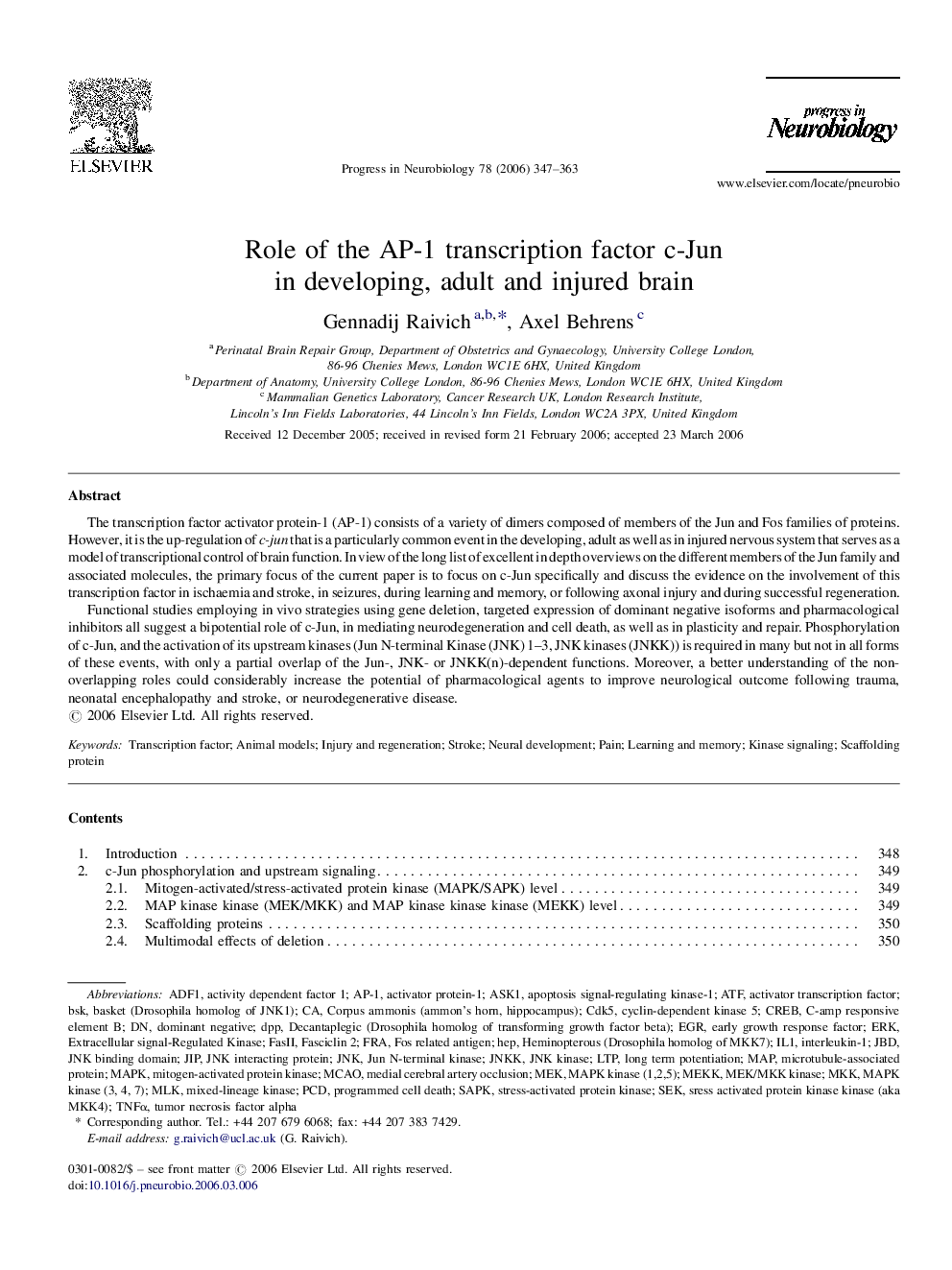| Article ID | Journal | Published Year | Pages | File Type |
|---|---|---|---|---|
| 4354018 | Progress in Neurobiology | 2006 | 17 Pages |
The transcription factor activator protein-1 (AP-1) consists of a variety of dimers composed of members of the Jun and Fos families of proteins. However, it is the up-regulation of c-jun that is a particularly common event in the developing, adult as well as in injured nervous system that serves as a model of transcriptional control of brain function. In view of the long list of excellent in depth overviews on the different members of the Jun family and associated molecules, the primary focus of the current paper is to focus on c-Jun specifically and discuss the evidence on the involvement of this transcription factor in ischaemia and stroke, in seizures, during learning and memory, or following axonal injury and during successful regeneration.Functional studies employing in vivo strategies using gene deletion, targeted expression of dominant negative isoforms and pharmacological inhibitors all suggest a bipotential role of c-Jun, in mediating neurodegeneration and cell death, as well as in plasticity and repair. Phosphorylation of c-Jun, and the activation of its upstream kinases (Jun N-terminal Kinase (JNK) 1–3, JNK kinases (JNKK)) is required in many but not in all forms of these events, with only a partial overlap of the Jun-, JNK- or JNKK(n)-dependent functions. Moreover, a better understanding of the non-overlapping roles could considerably increase the potential of pharmacological agents to improve neurological outcome following trauma, neonatal encephalopathy and stroke, or neurodegenerative disease.
